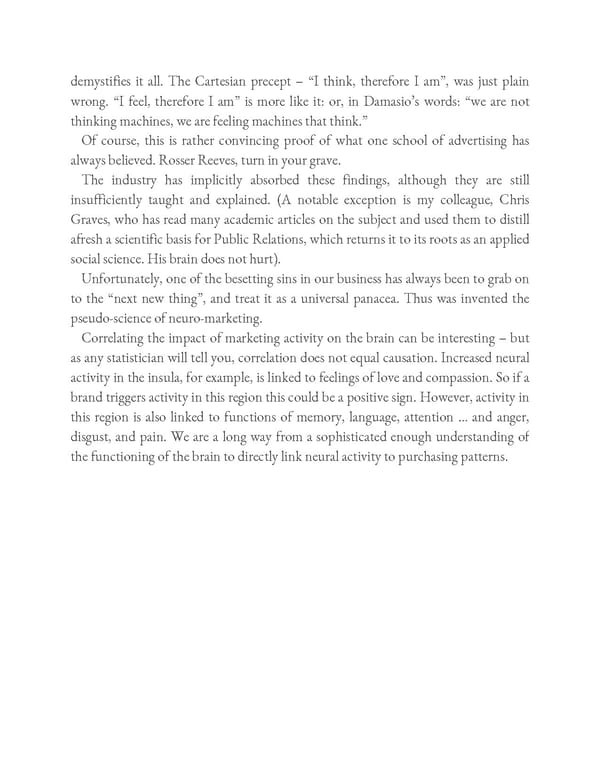demystifies it all. The Cartesian precept – “I think, therefore I am”, was just plain wrong. “I feel, therefore I am” is more like it: or, in Damasio’s words: “we are not thinking machines, we are feeling machines that think.” Of course, this is rather convincing proof of what one school of advertising has always believed. Rosser Reeves, turn in your grave. The industry has implicitly absorbed these findings, although they are still insufficiently taught and explained. (A notable exception is my colleague, Chris Graves, who has read many academic articles on the subject and used them to distill afresh a scientific basis for Public Relations, which returns it to its roots as an applied social science. His brain does not hurt). Unfortunately, one of the besetting sins in our business has always been to grab on to the “next new thing”, and treat it as a universal panacea. Thus was invented the pseudo-science of neuro-marketing. Correlating the impact of marketing activity on the brain can be interesting – but as any statistician will tell you, correlation does not equal causation. Increased neural activity in the insula, for example, is linked to feelings of love and compassion. So if a brand triggers activity in this region this could be a positive sign. However, activity in this region is also linked to functions of memory, language, attention … and anger, disgust, and pain. We are a long way from a sophisticated enough understanding of the functioning of the brain to directly link neural activity to purchasing patterns.
 Ogilvy on Advertising in the Digital Age Page 399 Page 401
Ogilvy on Advertising in the Digital Age Page 399 Page 401